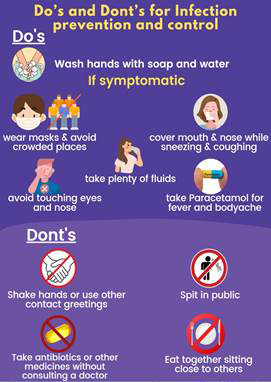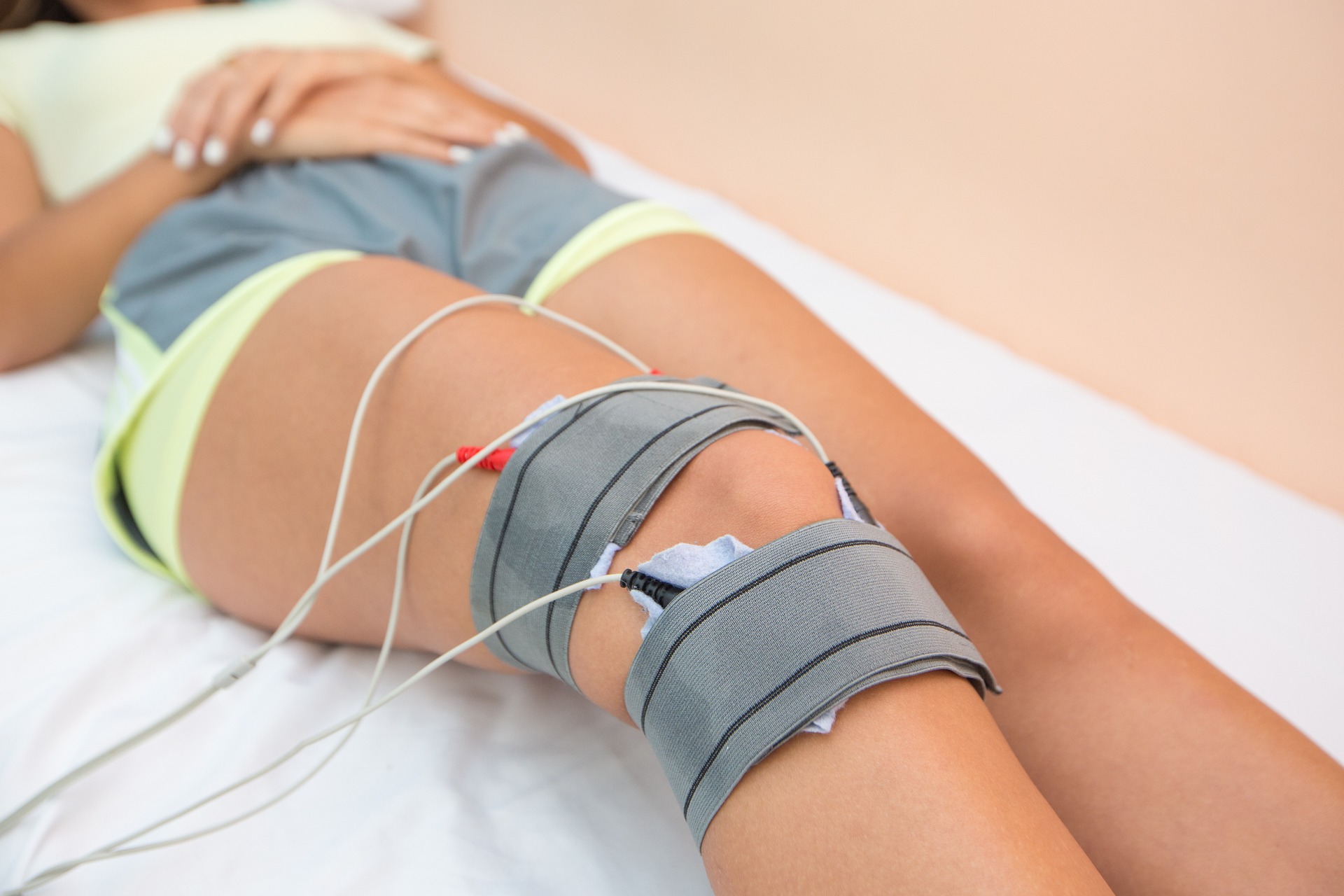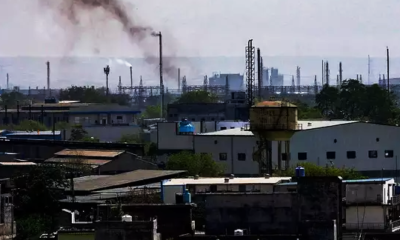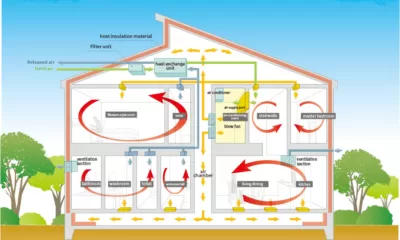Health
H3N2 Influenza Dieses: Symptoms, Precautions & Treatment

H3N2 is a subtype of Seasonal Influenza, that is currently fast spreading disease in India. It is an acute respiratory infection by influenza viruses.
Any age group will be affected by this viral flu. Mostly, Children and old age person are affected by this disease.
India faces this type of seasonal disease two times in a year, first Jan to March(Winter to summer season transition period), And second Post monsoon Aug to Oct (summer to winter season transition). Urban and semi Urban areas are mostly affected whereas rural areas have a mild effect or no effect by this.
According to “National Centre for Disease Control” H3N2 flu is highly risky for children aged less than 5 years especially <2 years of age, old age; Pregnant mothers, Health workers, Co-morbid conditions (Lung disease, heart disease, liver disease, kidney disease, blood disorders, Diabetes); Immuno-compromised; long term steroid therapy treatment.
Table of Contents
Symptoms of H3N2
Common symptoms of H3N2 influenza are:
- Fever (100 to 104 degrees Fahrenheit)
- Cough.
- Headache.
- Weakness (Body feels tired).
The Symptoms in adults are:
- High-grade fever not responding to antipyretics.
- Difficulty in breathing or shortness of breath
- Pain or pressure in the chest or abdomen
- Sudden dizziness, Confusion and
- Severe or persistent vomiting.
The symptoms in children are:
- Fast breathing or difficult breathing
- Bluish skin/lips/nails color
- Inability to drink enough fluids/ refusal of feeds
- Lethargy/somnolence
- Irritability/persistent crying
- High fever with rash/cold extremities.
If anyone has these symptoms it is advised to visit for Doctor for diagnostics and treatment before severe conditions.
How to prevent H3N2 virus?
In Dense populations, H3N2 flu transmits rapidly. This is transmitted by Airborne droplets from infected human beings; and Direct contact or contact with fomites. Mostly avoid visiting Crowded places.
So following H3N2 Influenza Precautions should be followed:
- Use Mask.
- Wash hands with Soap regularly or Use sanitizer.
- Avoid active/passive smoking
- Avoid close contact with others
- Avoid Hand Shaking
- Take Penalty of liquid.
- Cover mouth while sneezing & coughing
- Avoid touching the nose and mouth.
Read also: Physiotherapy is More Beneficial than Medicine or Other type treatment
How many days H3N2 last?
H3N2 mostly shows symptoms in 1 to 2 days. and it lasts for 7 to 10 days in general. Please take consult a doctor for the specific time period for your case.
What is the treatment for H3N2?
In Common symptoms, Peracitamol is used. The currently available prescription drugs are oseltamivir, zanamivir, peramivir, and baloxavir. Consult a Doctor for suitable treatment.

Health
Physiotherapy is More Beneficial than Medicine or Other type treatment

Nowadays only surgery and medicines are not the only solution for patients with many physical problems. But Physiotherapy is the most effective and trending treatment also.
Physiotherapy treatment may include exercise programs, manual therapy, electrotherapy, and education about injury prevention and self-management.
How Physiotherapy is a better option than other types of treatments?
- In this type of treatment, no medicines are consumed or maybe a little.
- It does not involve surgery
- Physiotherapy has almost no side effects.
- Treatment would be done only on the affected part of the body.
- Advanced medical equipment used for treatment.
In Which condition Physiotherapy helps?
| Neurological | Orthopaedic | Miscellaneous |
| Paralysis/stroke | Low back pain / Slip Disc | Sports injuries |
| cerebral palsy | Spondylitis | obesity |
| Parkinson disease | Frozen Shoulder | Deep vein thrombosis |
| Head Injury | osteoarthritis | Cough collection in chest |
| Facial/Bell’s palsy | Muscular dystrophy | Pre & Post delivery complications |
| GB syndrome | Post fracture stiffness & Pain | Postural problems |
| Motor Neuron Disease | Muscles Cramps | Diabetes |
Cons:
- Time-consuming: Physiotherapy can be a time-consuming form of treatment, requiring multiple appointments over a period of weeks or months.
- Cost: Physiotherapy can be expensive, particularly if it is not covered by health insurance.
- Discomfort: Some physiotherapy techniques, such as massage and stretching, can be uncomfortable or even painful.
- Limited availability: Physiotherapy may not be available in all areas or may have long wait times for appointments.
Overall, physiotherapy has many benefits and can be a highly effective form of treatment for a wide range of conditions. However, it also has some potential drawbacks, and it’s important to weigh the pros and cons before undergoing treatment.
Read also: H3N2 Influenza Dieses: Symptoms, Precautions & Treatment
-

 Business2 years ago
Business2 years agoBhiwadi: An industrial city You Should Know About
-

 Uncategorized1 year ago
Uncategorized1 year agoChoosing Best Cement for Paver Block Manufacturing: A Comprehensive Guide
-

 Tech2 years ago
Tech2 years agoBest AC brands in India 2023
-

 Indian Culture2 years ago
Indian Culture2 years agoTop 5 Destinations to Celebrate Holi 2023 in North India
-

 Uncategorized1 year ago
Uncategorized1 year agoOptimizing Ventilation and Air Circulation in Architectural Building Design: Enhancing Indoor Comfort and Health
-

 Uncategorized2 years ago
Uncategorized2 years agoConcrete blocks: Types, Tests Pros & manufacturing process
-

 Business2 years ago
Business2 years agoSolar Panels: 3 Types, Working & Manufacturing Process
-

 Tech2 years ago
Tech2 years agoE-waste Management Project: Effects, Challenges, and Solution




